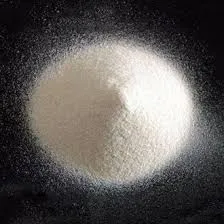
Nov . 07, 2024 06:42 Back to list
grades of hpmc
Understanding the Grades of HPMC A Comprehensive Overview
Hydroxypropyl Methylcellulose (HPMC) has emerged as a pivotal ingredient in various industries such as pharmaceuticals, food, and construction due to its versatile properties. Its effectiveness as a thickening agent, emulsifier, and stabilizer makes it an essential component in numerous applications. However, one critical aspect that often necessitates careful consideration is the grading of HPMC, as it significantly influences its functionality and compatibility in different formulations.
Understanding the Grades of HPMC A Comprehensive Overview
In the pharmaceutical industry, the grades of HPMC play a crucial role in drug formulation. For instance, high viscosity HPMC is preferred in sustained-release formulations, where it controls the release of active ingredients over an extended period. This slow-release characteristic is essential for medications that require a consistent dosage throughout the day, aiding in patient compliance and therapeutic effectiveness. Conversely, low-viscosity HPMC is often utilized in immediate-release formulations, ensuring rapid dissolution and absorption of the drug.
grades of hpmc

The food industry also capitalizes on the unique properties of HPMC. Different grades are employed to achieve desired textures, improve moisture retention, and enhance the overall mouthfeel of products. For example, in gluten-free baked goods, HPMC can mimic the structural properties of gluten, providing the necessary elasticity and chewiness that are typically absent in gluten-free formulations. Moreover, its ability to form films makes it an excellent choice for coatings, aiding in preservation and enhancing visual appeal.
In the construction sector, HPMC serves as a critical additive in dry-mix mortar formulations, providing improved workability, adhesion, and water retention. Here, different grades of HPMC are selected based on the specific requirements of the application, ensuring optimal performance in various environmental conditions.
Moreover, the grading of HPMC is not limited to its primary function; it also dictates how the substance interacts with other components within a formulation. Compatibility with other ingredients is paramount, especially in complex formulations where the performance of one ingredient may significantly affect another.
In conclusion, understanding the grades of HPMC is essential for professionals in various industries, as it allows them to select the appropriate type for their specific applications. Whether in pharmaceuticals, food, or construction, HPMC’s diverse grades offer tailored solutions that enhance product quality and performance. As the demand for versatile and effective ingredients continues to grow, so too will the importance of HPMC and its various grades in meeting industry needs.
-
Versatile Hpmc Uses in Different Industries
NewsJun.19,2025
-
Redispersible Powder's Role in Enhancing Durability of Construction Products
NewsJun.19,2025
-
Hydroxyethyl Cellulose Applications Driving Green Industrial Processes
NewsJun.19,2025
-
Exploring Different Redispersible Polymer Powder
NewsJun.19,2025
-
Choosing the Right Mortar Bonding Agent
NewsJun.19,2025
-
Applications and Significance of China Hpmc in Modern Industries
NewsJun.19,2025







